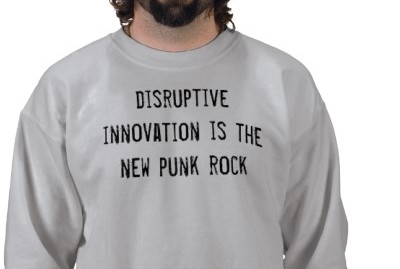Design in a Disruptive Age
Posted May 22, 2014
It is a cliche to say, in 2014, that the times are changing. Change and perplexing questions about time have been in the popular ethos for decades. The threat of being cliche did not stop Scott Simpson from writing a short meditation, Design in the Age of Disruption, on designing in an age of disruptive technologies. He made some good points along the way.
Scott starts his article with a description of the history of photography and the disruptive technologies that have brought us into the age of the smartphone, Instagram, and TMI from the age of daguerreotypes. His point is that within any field there are inherent changes that will take place over time that will force the field to reanalyze its operation procedures. Kodak is no longer the Kodak of the Brownie. Polaroid is no longer around at all.
He writes that these changes in technology, “[open] up all kinds of opportunities for architects and engineers to be the designers of processes as well as places.” It would be advantageous to add a caveat after this line. Architects and engineers have always been designers of processes as well as structures. There basic presumption was that the edifice was to be used in some way, so user experience was built into their process, still is. But the realization that architecture is more than a building is a newer realization.
Scott continues to make a further point: “All this changes the nature of design in a fundamental way, shifting it from a cost to an investment.” There is the rub.
Many large scale design firms, architects and engineers at the forefront, have operated on the business model of designing for construction, construction being the end goal. Other designers, experience designers, product designers, graphic, and interactive designers, have known the truth of Scott’s statement for many years. A design is never really finished. It “learns” from being used and thus must change. But the majority of design processes remain static — the paid for process leads to a single instance of product, graphic, interactive, what have you.
The business world is slowly, but surely, learning what we believe Scott is trying to say. Investment is not a static process. When design becomes an investment in future business the design process must continue throughout the life of the product, retail center, website, building, or museum. ESI has been driven by the principle that design evolves. Evolution necessitates involvement. A design is never finished until the audience completes it, as our founder Edwin Schlossberg says. That means that disruption is an everyday occurrence in the life cycle of any design. New users, new expectations, evolving experiences, create both opportunities and problems that must be addressed. In meeting those questions, the design evolves.
As designers in the age of disruption, we are soon to be held responsible for the evolving experience of our designs. From buildings, to the web, to museum exhibits, to products, the sophistication that the growing field of design has instilled in its audience is creating new challenges to satisfy. Fueled by technology, innovation, and experience, design is leading the way over product. So good job design world, and carry on.




Join The Conversation